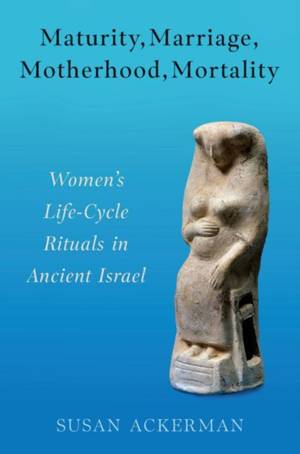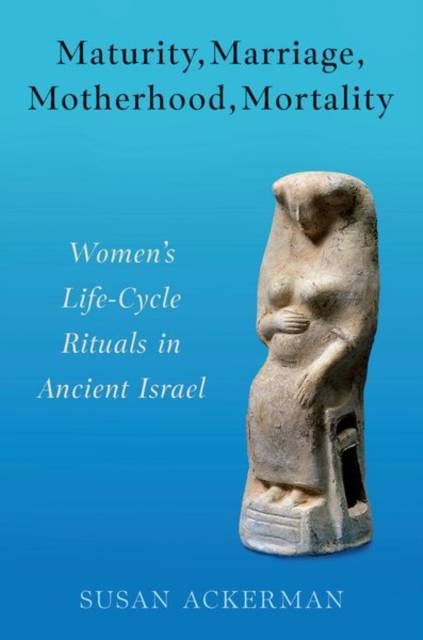
- Retrait gratuit dans votre magasin Club
- 7.000.000 titres dans notre catalogue
- Payer en toute sécurité
- Toujours un magasin près de chez vous
- Retrait gratuit dans votre magasin Club
- 7.000.0000 titres dans notre catalogue
- Payer en toute sécurité
- Toujours un magasin près de chez vous
Description
Maturity, Marriage, Motherhood, Mortality is a deft study of women's life-cycle rituals in ancient Israel. These include rituals that marked a young woman's coming of age ("maturity") and her betrothal and wedding ("marriage"); rituals undertaken by women during pregnancy, parturition, and their first days and early years after giving birth ("motherhood"); and rituals that were enacted at the time of a woman's death and in the months and years that followed ("mortality"). The book's aims are tripartite. The first is to sketch as fully as possible a picture of women's life-cycle events and rituals from preexilic and early postexilic Israel, using both evidence that can be gleaned from our primary source for the religious traditions of ancient Israel-the Bible-as well as extrabiblical data, including ancient Israelite archaeological data and archaeological, iconographic, and textual data that come from the many peoples of the ancient Near East and eastern Mediterranean by whom the Israelites were influenced or with whom they interacted.
The second is to highlight the several distinctive features that characterized women's life-cycle events and rituals: for example, the way women's life-cycle events can flow as a virtually uninterrupted ritual continuum, from, say, coming of age, to betrothal, to marriage, to motherhood, and also the ways in which Israelite women's experiences during life-cycle events and rituals differed from those of their male counterparts. The experience of a bride who is "given" to her prospective spouse during betrothal and wedding rituals is different, for example, than the experience of a groom who "takes" a woman in marriage. Finally, the book offers a six-part theoretical model that explains the distinctive features that appear within Israelite women's life-cycle rituals and that accounts for the differences between women's life-cycle rituals and men's.
The second is to highlight the several distinctive features that characterized women's life-cycle events and rituals: for example, the way women's life-cycle events can flow as a virtually uninterrupted ritual continuum, from, say, coming of age, to betrothal, to marriage, to motherhood, and also the ways in which Israelite women's experiences during life-cycle events and rituals differed from those of their male counterparts. The experience of a bride who is "given" to her prospective spouse during betrothal and wedding rituals is different, for example, than the experience of a groom who "takes" a woman in marriage. Finally, the book offers a six-part theoretical model that explains the distinctive features that appear within Israelite women's life-cycle rituals and that accounts for the differences between women's life-cycle rituals and men's.
Spécifications
Parties prenantes
- Auteur(s) :
- Editeur:
Contenu
- Nombre de pages :
- 408
- Langue:
- Anglais
Caractéristiques
- EAN:
- 9780197809655
- Date de parution :
- 29-10-25
- Format:
- Livre relié
- Format numérique:
- Genaaid
- Dimensions :
- 156 mm x 235 mm

Les avis
Nous publions uniquement les avis qui respectent les conditions requises. Consultez nos conditions pour les avis.






